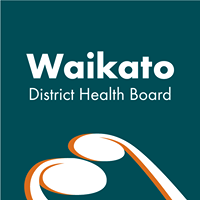November 7
Waikato Shallow Lakes - Cyanobacterial Warning Update
With warmer weather and longer hours of daylight upon us, Waikato's shallow lakes are again being monitored more frequently for cyanobacteria (blue-green algae).
Cyanobacterial cell counts are above warning level and health warnings are newly issued for Lakes Hakanoa, Waahi and Ngaroto.
Meanwhile, current warnings remain in force for Lakes Waikare, Whangape and Kainui.
Waikare has had constant health warnings in place since December 2005, when it was added to the regular monitoring programme.
In general, cyanobacterial numbers are expected to rise as the days get warmer and longer.
Users of all shallow lakes in the region should increase their caution and have a good look at the water before taking part in any activity which involves direct water contact in these lakes.
People should always avoid contact with water that looks cloudy green or brown, or has scum forming, even when there is no warning in place.
Most lakes are not tested, and water users must consider the possibility of cyanobacterial blooms in any water body before they use it.
"Cyanobacterial numbers and species vary considerably, even in lakes which are very close to each other," said Waikato District Health Board Medical Officer of Health Dell Hood.
Lake users are reminded that test results should be used for general guidance only, as cyanobacteria and their toxins will not be evenly spread through any lake and may be concentrated in some areas by wind and water movements.
During blooms, lakes should not be used for any activity which involves skin contact with the water. If people choose to do this, they should shower and change their clothing as soon as possible afterwards, even if no symptoms are noticeable.
Swallowing water from lakes affected by blooms should also be avoided.
While not everyone will be affected, for some the risks are of rash and skin irritation, eye irritation, allergic symptoms such as hayfever and asthma, and possibly stomach upsets such as diarrhoea and vomiting.
These effects may not appear until some time after contact with the affected water.
Up-to-date information on cyanobacterial cell counts is available from local councils and Environment Waikato.
Visit www.ew.govt.nz/enviroinfo/water/healthyrivers/waikato/algalbloom/ for more information.
Health advice is available from the Public Health Unit (07) 839 8899 during and out of hours.
ENDS



 Keith Newman: Revised Edition Of Ratana Biography Highlights Lasting Legacy
Keith Newman: Revised Edition Of Ratana Biography Highlights Lasting Legacy Environmental Defence Society: Groundhog Day, New Book Shows History Is Repeating Itself
Environmental Defence Society: Groundhog Day, New Book Shows History Is Repeating Itself NZEI Te Riu Roa: Mandated Single Approach To Reading Will Not Work
NZEI Te Riu Roa: Mandated Single Approach To Reading Will Not Work The Conversation: Could The School Phone Ban Work?
The Conversation: Could The School Phone Ban Work? Public Health Communication Centre: To Avoid A Measles Epidemic, Aotearoa Must Close The ‘Immunity Gap’
Public Health Communication Centre: To Avoid A Measles Epidemic, Aotearoa Must Close The ‘Immunity Gap’ Heritage New Zealand: Kid-friendly Archaeology Resource Kit Launched As Part Of Archaeology Week
Heritage New Zealand: Kid-friendly Archaeology Resource Kit Launched As Part Of Archaeology Week